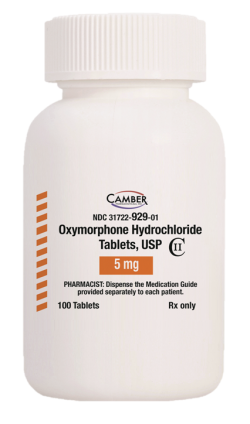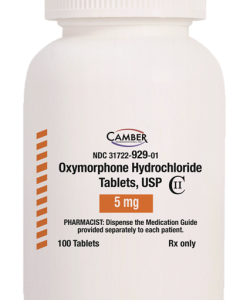What Is Oxymorphone (Opana) in Australia?
Oxymorphone, known as Opana, is a potent Schedule II opioid painkiller with therapeutic benefits and significant risks in Melbourne, Australia. The gripping dangers associated with oxymorphone include the specters of abuse, dependency, and the ominous reality of life-threatening overdoses. The path of oxymorphone misuse often spirals into the dark realm of addiction, manifesting as opioid use disorder—a chronic and relapsing affliction that can dominate lives and destroy futures. Buy Oxymorphone in Sydney, New South Wales, Australia for comprehensive, 24/7 pain management that perfectly addresses the needs of chronic pain sufferers.
This comprehensive guide offers insights into why the FDA has deemed the risks of Opana to overshadow its potential benefits, leading to its eventual withdrawal from the market. Furthermore, it provides avenues for those grappling with oxymorphone addiction to seek help and find treatment within their local communities.
Oxymorphone vs. Oxycodone
Owning its place as a formidable opioid analgesic, oxymorphone is prescribed to alleviate moderate to severe pain, particularly in vibrant Sydney, Australia. Beyond its acknowledged medicinal value lies a lurking potential for abuse and the shadow of addiction. Available in both immediate-release and extended-release formulations, oxymorphone targets persistent pain that demands unwavering management throughout the day, enhancing well-being for those in distress. Additionally, it can be found as an oral solution, accommodating various patient needs. You can order Oxymorphone in Melbourne, Australia, to effectively ease the discomfort of post-surgical recovery.
On the other hand, oxycodone stands as another powerful prescription opioid designed to address intense pain in adults. Available in assorted forms—tablet, capsule, and solution—oxycodone too is crafted into both immediate-release and extended-release formulas. While immediate-release options deliver swift relief, extended-release varieties offer a gradual release of medication, ensuring sustained comfort over time.
Both oxymorphone and oxycodone share a common origin as opioid agonists, working to inhibit the transmission of pain signals to the brain. They effectively diminish pain perception through altering how the brain processes discomfort. However, alongside their analgesic properties, both compounds can incite similar side effects, which warrant vigilance and care.
Prolonged exposure to oxymorphone may give rise to unsettling experiences like fever and cognitive disarray, while extended use of oxycodone could leave individuals ensnared in fatigue and plagued by sleep disturbances. It’s essential to take caution when employing extended-release forms of oxycodone, as these concentrated options should only be considered if immediate-release variants fail to meet pain management needs. Such medications should only be used after a demonstrated tolerance to opioids for a minimum of seven days.
Oxymorphone Side Effects
While oxymorphone excels at pain management, its use can usher in a range of side effects that warrant serious attention, especially in places like Adelaide, Australia. Those under treatment should be acutely aware of these potential reactions. Common side effects of oxymorphone include:
– Nausea
– Dizziness
– Drowsiness
– Headaches
– Dry mouth
– Itching
– Vomiting
– Constipation
– Fever (with extended use)
Vigilance is key; any troubling side effects should prompt immediate consultation with a healthcare provider. It’s crucial to be aware of tolerance, addiction, and dependence as they intertwine with oxymorphone’s use.
Tolerance: Over time, a patient may find their body developing a tolerance to the effects of oxymorphone, necessitating higher doses to achieve initial pain relief. This growing tolerance can pave the way for adverse effects and further complications.
Dependence: Dependence occurs when the body adapts to oxymorphone, leading to withdrawal symptoms if the medication is reduced or stopped abruptly. Individuals may experience restlessness, muscle aches, anxiety, insomnia, and even more severe symptoms upon cessation.
Addiction: Like other opioids, oxymorphone holds the potential to foster addiction. Prolonged use or misuse may culminate in both psychological and physical reliance, engendering an overpowering compulsion to continue use despite the adverse consequences it may inflict on health and well-being. This clinical condition, known as opioid use disorder, reflects a troubling cycle of relapse and deterioration when left unaddressed.
What Are the Medical Uses of Oxymorphone in Australia?
Oxymorphone is a potent analgesic that is predominantly prescribed for the management of severe, chronic pain, particularly in Melbourne, Australia. This medication is often a beacon of hope for patients battling relentless pain that has proven resistant to traditional pain relief methods. It finds its vital role in alleviating cancer-related pain, easing the discomfort of post-surgical recovery, and addressing chronic ailments such as neuropathic pain. However, healthcare providers must tread carefully, balancing the substantial benefits of oxymorphone against the looming risks of addiction and potential abuse as they determine its suitability as a treatment option.
What is the Chemical Composition of Oxymorphone?
Oxymorphone comes in two main forms: immediate-release (Opana) and extended-release (Opana ER) in Melbourne, Australia. The immediate-release tablets are crafted for rapid relief, quickly combating pain with their fast-acting properties, while the extended-release formulation is engineered for continuous, around-the-clock pain management, ideal for chronic pain sufferers. Both forms of Opana carry a formidable risk of addiction, as individuals may be tempted to misuse the medication in a desperate pursuit of an intensified, euphoric high. Oxymorphone is available for sale online in Adelaide, South Australia. Additionally, it has the potential to influence the cardiovascular system by affecting heart rate and blood pressure.
What Are the Side Effects of Oxymorphone?
The use of oxymorphone can usher in a variety of side effects, some quite common, while others may escalate to severe issues. More prevalent side effects include:
– Constipation
– Dizziness
– Drowsiness
– Dry mouth
– Nausea
– Respiratory depression
– Low blood pressure
– Altered mental status
It is crucial for patients to remain vigilant, promptly reporting any troubling symptoms to their healthcare providers to ensure their safety and well-being.
How Long Does Oxymorphone Stay in Your System?
Oxymorphone’s detection duration in the body varies significantly based on individual factors like metabolism and body weight in Australia. Generally, oxymorphone can be detected in urine for up to three days following last use, while traces may linger in hair for as long as 90 days. This variability highlights the complexity of how our bodies process substances and underscores the importance of responsible use.
How Long Does Oxymorphone Stay in Your System?
The duration that oxymorphone remains detectable in one’s system can vary remarkably based on individual characteristics, such as metabolism and body weight. Generally, oxymorphone can be detected in urine for up to three days following last use, while traces may linger in hair for as long as 90 days. This variability highlights the complexity of how our bodies process substances and underscores the importance of responsible use.





